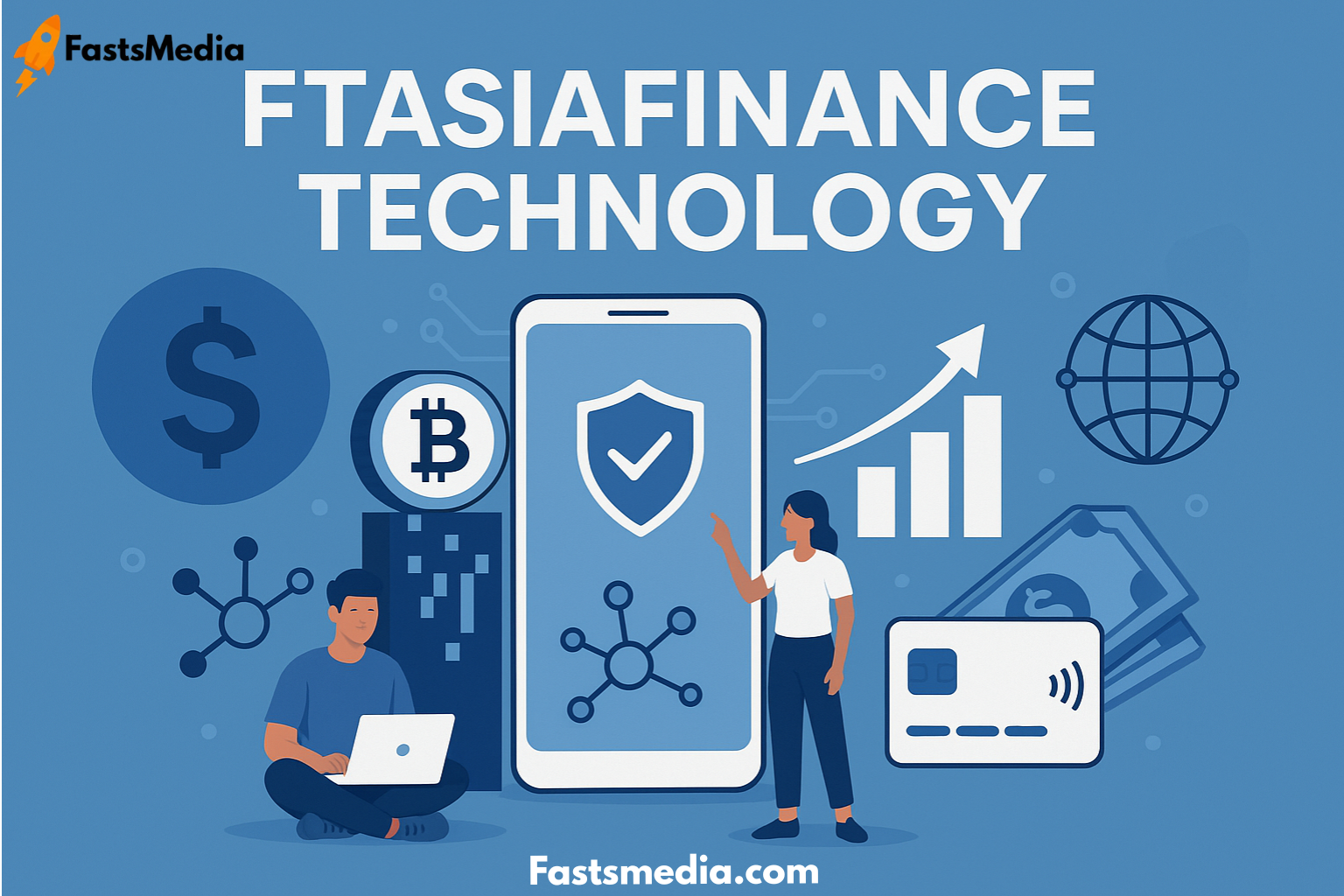Introduction: Understanding the Rise of FTAsiaFinance Technology
FTAsiaFinance Technology has emerged as a transformative force reshaping the way financial systems operate across Asia. Combining financial technology (fintech), artificial intelligence (AI), blockchain, and digital banking, FTAsiaFinance represents a major leap toward financial inclusion, transparency, and efficiency.
This concept isn’t limited to a single company—it symbolizes the integration of advanced technology into financial ecosystems to enhance accessibility, especially in emerging Asian markets. With billions of people using smartphones and mobile banking apps, FTAsiaFinance Technology has become central to the continent’s digital transformation.
What Is FTAsiaFinance Technology?
FTAsiaFinance Technology refers to the use of cutting-edge digital tools and innovation to modernize financial services in Asia. It encompasses a range of solutions such as:
- Mobile payments and digital wallets
- AI-driven risk assessment
- Blockchain-based transactions
- Automation of banking operations
- Decentralized finance (DeFi) and open banking
The goal of this technology is to create an inclusive, secure, and efficient financial system where individuals and businesses can transact seamlessly—regardless of geography or income level.
In simpler terms, FTAsiaFinance Technology is about bridging the gap between traditional banking and next-generation financial innovation. It enables greater financial independence, encourages entrepreneurship, and fosters trust through digital transparency.
The Importance of FTAsiaFinance Technology in the Modern World
Empowering Financial Inclusion
In several Asian countries, millions of people remain unbanked due to limited access to physical banking infrastructure. FTAsiaFinance Technology offers a solution by promoting digital inclusion through mobile-first banking platforms. This empowers users in rural and urban areas alike to manage savings, send remittances, or apply for microloans directly from their smartphones.
Driving Economic Growth
Fintech solutions like FTAsiaFinance stimulate local economies by providing credit access to small and medium-sized enterprises (SMEs), improving business efficiency, and reducing transaction costs. By digitizing financial services, countries can boost GDP growth, attract foreign investment, and strengthen global competitiveness.
Key Components of FTAsiaFinance Technology
Artificial Intelligence and Machine Learning
AI plays a crucial role in automating decision-making, detecting fraud, and personalizing financial services. With machine learning algorithms, banks and fintech companies can evaluate customer creditworthiness more accurately and offer customized loan solutions.
Blockchain and Cryptocurrency Integration
Blockchain technology ensures data security and transparency in transactions. It creates an unalterable record of operations, minimizing risks of fraud and corruption. Moreover, FTAsiaFinance’s adoption of cryptocurrency and digital tokens allows for faster, borderless transactions.
Cloud Computing and Big Data
These technologies support scalable financial infrastructure. By storing and analyzing massive amounts of customer data, institutions can predict trends, manage risks, and enhance user experience.
Mobile and Digital Banking
FTAsiaFinance Technology heavily relies on mobile-first solutions. This means that most financial services—payments, transfers, investments—are optimized for smartphone users, reflecting the increasing digital literacy across Asia.
Step-by-Step Guide: How FTAsiaFinance Technology Transforms Banking
Step 1: Digital Onboarding
Customers can open accounts or verify their identity through AI-powered KYC (Know Your Customer) systems, eliminating paperwork and long waiting times.
Step 2: Real-Time Transactions
Blockchain-based systems ensure instant transfers with minimal fees, reducing dependency on intermediaries and ensuring global accessibility.
Step 3: Smart Credit Evaluation
AI algorithms analyze customer data—spending patterns, income sources, and digital behavior—to create more reliable credit scores.
Step 4: Personalized Services
Through data analytics, users receive tailored financial recommendations, such as investment opportunities or savings plans.
Step 5: Security and Compliance
FTAsiaFinance integrates biometric authentication, data encryption, and smart contracts to maintain compliance with financial regulations while safeguarding user data.
Benefits and Challenges of FTAsiaFinance Technology
Benefits
- Accessibility: People in remote regions gain access to banking services via mobile devices.
- Transparency: Blockchain promotes openness and accountability in transactions.
- Speed and Efficiency: Automation reduces delays and human error.
- Cost-Effectiveness: Eliminates expensive middlemen and lowers transaction fees.
- Economic Empowerment: Helps small businesses grow through digital financing options.
Challenges
- Cybersecurity Threats: As digital platforms grow, so do hacking risks.
- Regulatory Barriers: Different nations have varying fintech laws that complicate operations.
- Digital Literacy Gaps: Many users still lack the education to navigate digital financial tools effectively.
- Infrastructure Limitations: Poor internet connectivity can slow adoption in rural areas.
To overcome these issues, governments and financial institutions must collaborate to create a balanced, secure, and inclusive fintech ecosystem.
The Future of FTAsiaFinance Technology
The future of FTAsiaFinance is bright. With ongoing developments in AI, DeFi, and sustainable fintech, Asia is expected to lead the world in digital finance adoption.
We can expect to see more open-banking frameworks, green fintech initiatives, and cross-border digital payment systems connecting economies seamlessly.
As technology continues to evolve, FTAsiaFinance will become more than just a tool—it will be a foundation for financial equality, offering everyone the chance to participate in the global economy.
Conclusion
FTAsiaFinance Technology represents the next frontier of financial innovation in Asia. By merging technology with finance, it not only modernizes traditional systems but also empowers millions of people to achieve financial independence.
From AI-driven analytics to blockchain-based trust systems, its impact is already visible in how we save, invest, and transact. As the digital economy grows, embracing FTAsiaFinance Technology will be key for institutions and individuals looking to stay ahead in a borderless, tech-driven financial future.
FAQs
1. What is FTAsiaFinance Technology?
FTAsiaFinance Technology is a fintech innovation framework that integrates AI, blockchain, and digital banking to modernize financial systems across Asia.
2. How does it benefit individuals and businesses?
It improves accessibility, reduces transaction costs, and allows both individuals and small businesses to manage money more efficiently through digital tools.
3. Is FTAsiaFinance limited to Asia?
While it primarily targets Asian markets, its technologies and principles can be applied globally wherever financial digitalization is needed.
4. What makes it different from traditional banking?
Unlike traditional banks, FTAsiaFinance emphasizes speed, transparency, and inclusivity through decentralized and mobile-first solutions.
5. What is the future outlook for FTAsiaFinance?
With growing investments in fintech and AI, FTAsiaFinance is poised to lead Asia’s financial transformation over the next decade, driving innovation, inclusion, and sustainability.

